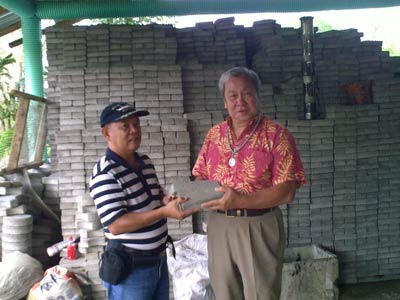Severe space storm coming
As if Hurricane Katrina in the US, iceberg meltdown in the North Pole, the Typhoons Frank, Ondoy, Pepeng, Lupit in the Philippines and the tsunamis of Southeast Asia were not enough, the world has to prepare from between 2010 - 2013 for severe space storms caused by what NASA predicted as solar maximum occurrence similar to the solar storm British astronomer Richard Carrington observed in 1859.NASA reports that:
The 1859 storm - known as the "Carrington Event" after astronomer Richard Carrington who witnessed the instigating solar flare -- electrified transmission cables, set fires in telegraph offices and produced Northern Lights so bright that people could read newspapers so bright that people could read newspapers by their red and green glow. A recent report by the National Academy of Sciences found that if a similar storm occurred today, it could case $1 to 2 trillion in damages to society's high-tech infrastructure and require four to ten years for complete recovery. For comparison, Hurricane Katrina caused "only $80 to 125 billion in damage. See the NASA forecast here
The need to plot strategies, programs, plans and target activities for when this event will happen is the reason for the 2010 Geo Hazard Mapping and Environment Summit. Despite the HMES 2010 advocacy to strengthen the gathering of information from outer space, using high technology implements, there is absolutely no contradiction to proposing measures to undertake mapping while knowing fully well about the forthcoming severe space event.
HMES 2010 is merely a pro-active measure to produce a wholly functional cooperation on creating the road map today for what is to take place between 2010 or 2011 up to 2013.While it is true that GIS could be reliant upon information from outer space, the heart of the HMES 2010 conference is to plot out a mechanism whereby a highly usable hazard map would be drawn today, before the space storms happen and other more dangerous disasters take place and put in place special contingency plans for unveiling and assembling properly stored devices unharmed from the effects of the magnetic storm. For all purposes and intents, the replacement equipment and infrastructure might be downgrades of the original structure destroyed by the solar calamity, making do with earth based remote sensing and even line of sight data and digital video transmission, at least the world will not be blind.
The organizers of HMES 2010 envisioned creating from out of the existing world geo hazard map, a back up hazard GIS and response plan that will be maximum safe kept -- possibly in a demagnetized environment -- and taken out when the Carrington-event type of disaster or the combination of that event and other calamities strikes the planet.
All measures relevant to humanitarian assistance should already be laid out in advance and implemented to a T at the appointed time.
Since this is not easily done without proper consensus, UN member nations must agree to the proposal, vote as one and willingly sign the attendant declaration of solidarity.
———————————————————————
Possibly related articles:
